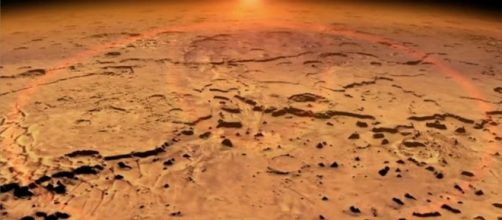A team of astronomers, with the help of scientists from Oxford University, discovered land formations on the surface of the Red Planet known as “Spiders.” The newly discovered “spiders” are not the actual insect but a dominant feature on the surface of Mars. The surprising thing is that these spiders were discovered in areas where scientists thought they would never exist.
Spiders on Mars
The formations are called spiders due to their “arachnid-like” appearance, according to Phys.Org. There have to be land erosions to create cracks and form spider-like patterns.
Volunteers affiliated with “Planet Four: Terrains,” a project hosted by Zooniverse, discovered the rare formations. The online project is one of the biggest and most popular search-platform today. It was launched in 2015 and Zooniverse is the first group to use the Project Builder platform.
Although the formations are called spiders, scientifically, experts refer to them as Araneiform. Usually, these formations occur on the planet’s South Pole. During Martian winters, carbon dioxide turns to ice creating the spiders. During summer, sunlight warms the land beneath the ice. As the ice melts, the gas also evaporates and drifts off dirt creating branches that look like spider legs.
Previously known spider landforms were discovered in the South Polar Layered Deposits (SPLD) still bonded by water ice and dust.
But the new study by scientists and volunteers paved the way for the discovery of the same formations in other areas of the Martian surface.
Confirmed sighting
NASA’s High-Resolution Imaging Science Experiment (HiRISE) camera aboard the Mars Reconnaissance Orbiter was used to confirm the recent discovery. Professor Chris Lintott from the Department of Astrophysics at Oxford University leads the online search project. The group is responsible for the recent discovery and it won’t be surprising if they will detect something more fascinating in the future.
Currently, Zooniverse hosts more than 100 projects with over 1.6 million volunteers who act as “armchair scientists.” The team assists in online scientific research.
About 10,000 volunteers worked on the spider formation research by analyzing 20,000 images collected by the Context Camera (CTX) also aboard NASA’s Mars Reconnaissance Orbiter.
Lead researcher, Dr. Meg Schwamb from the Gemini Observatory, said that the formation is an unexpected find. It was discovered due to the volume of volunteers analyzing the images. The discovery will help scientists understand the carbon dioxide jet behaviors on the surface of Mars.


